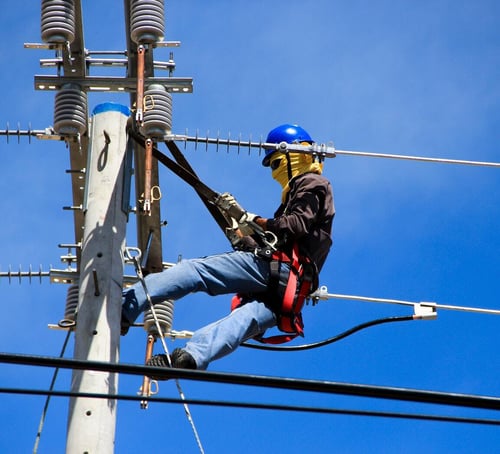How to Write a Fall Protection Plan
For construction workers working in elevation, one of the biggest dangers they face is the risk of falling. In fact, falling on construction sites is one of the leading causes of death among construction workers, raising a serious safety concern. One of the best ways to help your employees avoid this hazard is through a solid plan. A written plan is essential to promoting high safety standards in the workplace, and making sure your employees follow and understand it is just as important. Below we’ll go over what a fall protection plan is, why every site with fall hazards needs one, and the best tips on how to write them.
Table of Contents
What is a Fall Protection Plan?
So what exactly is a fall protection plan? A fall protection plan is defined as a safety plan for workers working in elevation. The main purpose of a protection plan is to provide a safe working environment for employees through analyzing a site’s fall hazards and describing fall protection methods and equipment used to help prevent the possible dangers that could occur. It’s important to remember that no plan is the same because each plan depends on the construction site since every site presents its own unique safety obstacles and fall hazards.

Why Might I Need One?
Wherever there is a fall hazard, a plan must be in place to accompany it. Fall protection systems are the ultimate resource to provide workers with the highest degree of safety when working up in the air. Due to the severity of an injury that can occur from a fall, every construction company that deals with elevated work is required to have a fall protection plan, and government regulations require that they are made available to every worker on site. It’s also important to be sure your employees are trained in the plan and know what to do in case of emergency because no plan is fall-proof. Although accidents can happen, the proper training in your employees will help to reduce this risk and increase the chances a life can be saved in the event a fall does happen.
What to Include in Your Fall Protection Plan
A solid fall protection plan has multiple steps and should pay as much attention to detail as possible. Below are the steps you should follow in what to address in your plan:
1) State information about the job site
This includes general information like the company in charge of the project, job site location, and the job foreman.
2) Assess the fall hazards on site
There can be many hazards on site, so be sure to keep track of all of them. Fall hazards can include but are not limited to floor holes, window openings, skylights, and elevator shafts.
3) Outline the fall arrest or restraint methods and fall protection equipment being used
There are a number of fall protection systems available for workers including full body harnesses, lanyards, lifelines, and guard rails to name a few. Also, be sure to state the manufacturer of all equipment that is used.
4) Outline the assembly, maintenance, inspection, and disassembly procedures for equipment being used
Your employees should know how to effectively use safety equipment, so be sure to outline its proper assembly, maintenance, and disassembly. Regular inspections should take place to ensure equipment meets OSHA requirements and defective equipment is removed immediately.
5) Address the handling, storing, and securing of tools and materials
Leaving equipment out to the weather’s elements can cause rust or other contamination, leading to product defectiveness. Be sure your employees know where to properly put equipment after use to prevent any deterioration that could occur.
6) Address what kind of overhead protection is being used
Overhead hazards are a serious safety concern. Workers should wear hardhats and toe boards should be installed to prevent debris and other objects from potentially falling below.
7) Outline the rescue plan
Accidents do happen. Be sure to state instructions for what to do in case of a fall and if injuries occur. It’s also important to list emergency service numbers and the locations of phones and first aid dispensers on site.
8) Certify employee training and instruction
Your plan should include a form for employees to sign stating their certification in training and instruction in the fall protection systems. This should be signed before they’re permitted into the construction site.
While these steps provide a good general outline of what should be included in a fall protection plan, remember again that each plan is different and will depend on the fall hazards present at each site.

Conclusion
From reading this article you should have a much better idea of what a fall protection plan is and why they’re necessary for every job site that presents fall hazards. Remember to be very specific and pay close attention to detail when writing your fall protection plan as worker safety is the most important factor for completing every job. While a fall protection plan is a great way to ensure higher safety standards in the workplace, it’s also a good idea to hold weekly safety meetings to keep those standards in place and remind employees of what matters most.
